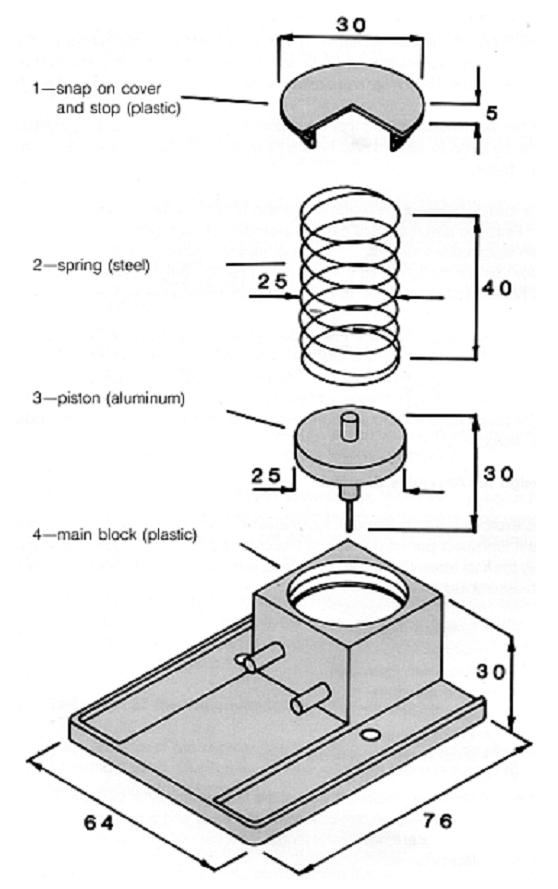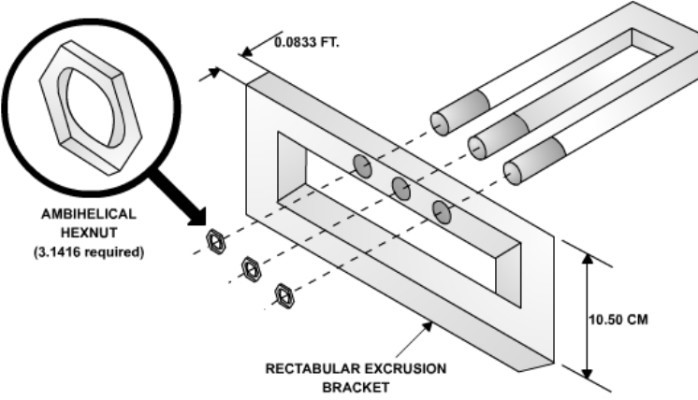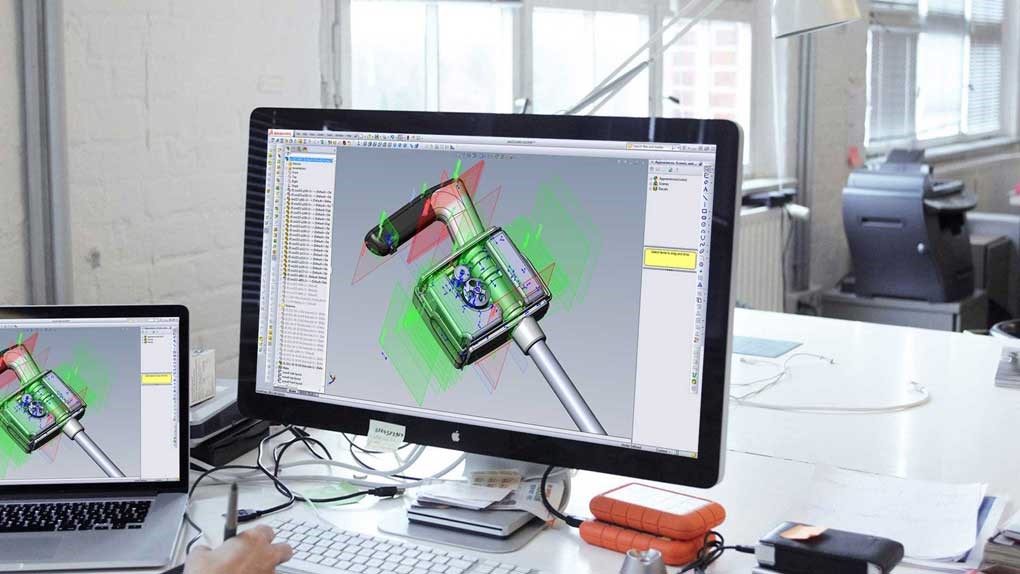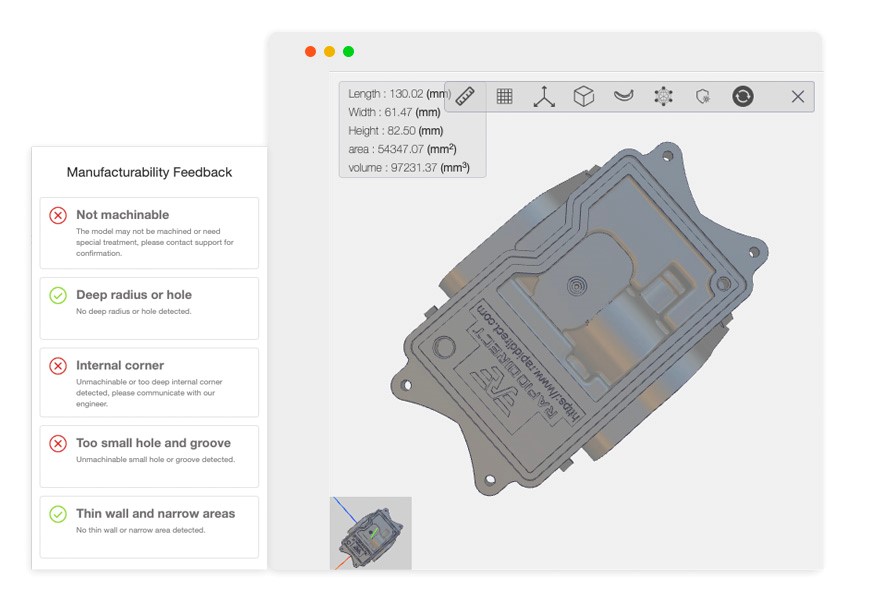When product designers have great ideas, they want to realize them in any way possible. But ideas are only great insofar as a manufacturer can turn them into reality using machines and materials. This is where Design for Manufacturing (DfM) comes to play.
Some designers view the manufacturing process as minor. That is it of little concern to them. However, this is a dangerous approach to product design. Design and manufacturing go hand in hand. Thus, such a neglecting approach ultimately produces an inferior end product.
This article discusses why Design for Manufacturing is so important during the prototyping stage. It also looks at how your business can harness the benefits of DfM to make better prototypes and, ultimately, better end-use parts and products.
What is DfM?
Design for Manufacturing is a product design philosophy that stresses the importance of designing prototypes and parts in a way that suits the manufacturing process. Many manufacturers also refer to it as Design for Manufacturability or just DfM.

This process involves considering several aspects of a design. These aspects include the shape and proposed material. It looks at the parameters in terms of how well the design can be realized using the proposed methods.
Those methods might be CNC machining, 3D printing, injection molding, or something else. In a sense, you can think of Design for Manufacturing as a form of compromise. Product designers may have very grand ambitions, but DfM serves as a reality check.
It is essential to change a feature that would be too difficult, slow, or expensive to make using the chosen manufacturing equipment and materials. In some cases, Design for Manufacturing involves collaboration across departments and even across multiple companies.
That’s because designers and engineers may need to correspond with toolmakers, manufacturers, and material suppliers. The correspondence helps to assess the possibilities and limitations of the project.
For example, some designs may be achievable with one kind of 5-axis CNC machining center but not another. On other occasions, the availability of certain metal alloys may determine whether a particular feature is feasible.
Design for Manufacturing vs. Design for Assembly
These are two closely related ideas, and it is important to distinguish them. Design for Assembly is the designing of a product in a bid to maximize its ease of assembly and disassembly for maintenance and repairs.

This approach usually focuses on principles like reducing the number of parts used. Thus, it ensures the ease of insertion of parts. It also confines assembly requirements and specifications to simple, repetitive motions.
The importance of Design for Manufacturing
Having looked at what DfM means, we must examine why Design for Manufacturing is important. Designing parts for manufacturability is critical, even for prototypes.

Although DfM can seem like a conservative approach to product design, it tends to result in tangible benefits to both producer and consumer. On the other hand, failure to consider DfM can lead to part failure or inefficient manufacturing.
The following are some reasons why Design for Manufacturing is important:
Guarantees Manufacturing Feasibility
Perhaps the most fundamental benefit of DfM is the guarantee of manufacturing feasibility and the prevention of part failure. By designing parts that manufacturing equipment can realistically build, companies know in advance. This way, they won’t experience problems like collapsing 3D prints, parts stuck in molds or dangerous chip buildup. In summary, Design for Manufacturing is important for quality assurance.
Increases Manufacturing Speed
Design for Manufacturing can also contribute to increased speed of manufacturing. A well-designed part for its manufacturing equipment ensures that cutting tools and other instruments can do their jobs more efficiently.
A simple example of DfM increasing speed is seen with injection molding design for manufacturing. It involves the incorporation of draft angles into injection molded parts. The draft angles allow for rapid ejection of each molded part from the mold. Parts without drafts, meanwhile, require force for removal. Also, the friction between surfaces may damage the part.
Reduces Overall Project Cost
This increase in speed can greatly reduce the overall cost of a project. DfM parts and prototypes require less time and labor. Thereby cutting down on power usage, etc., and also helping to reduce scrap.
Makes Automation and Simplification Possible
Designing easy-to-manufactured parts also increase automation possibilities. This is because there is a reduced need for oversight. In some cases, simple design alterations can simplify production by eliminating the need for multiple machines and setups.
Adding Design for Manufacturing to Your Workflow
When it comes to design and manufacturing, any designer with an elementary knowledge of engineering and manufacturing techniques can adopt DfM principles. Every project is unique.

Therefore, an analysis of potential manufacturing processes, materials, and other factors helps to inform design elements. Design for Manufacturing necessarily works on a case-by-case basis. However, some near-universal rules can lead to better prototypes and parts.
1. Simplify
Reducing the total number of components makes for more efficient manufacturing. It also reduces time on the assembly line. All of these lead to faster turnarounds and reduced costs.
2. Use standard or versatile components
Ask yourself whether a tailored component will help or hinder the success of the project. Standard components are produced in bulk and are cheaper than custom components.
3. Use machine-friendly materials
Materials affect manufacturability, making them important when incorporating DfM. Certain high-carbon steel may possess all the properties you desire for your part. However, if you need to use a CNC machine, you’ll ultimately be making life difficult for everyone. In that case, there will be a need to choose a more machine-friendly material. Similar constraints apply to 3D printers and other machines.
4. Minimize use of fasteners
Incorporating snap closures and tabs into components can eliminate a chunk of manufacturing time that would otherwise be required for separate fasteners.
5. Allow loose tolerances
Remember that tight tolerances require more machine time and, therefore, more money. So, during design and manufacturing, use loose tolerances wherever possible, as long as it won’t compromise the part’s functionality.
How RapidDirect Helps with Design for Manufacturing
RapidDirect offers you automatic and free Design for Manufacturability analysis for cnc machining parts on our platform. This platform incorporates an AI engine that automatically checks your CAD files for CNC machining manufacturability issues. This makes sure your designs are ready for manufacturing before they’re sent to the factory.

The engine analyzes a product’s DfM in terms of the following:
- Overall machinability
- Radius and hole depth
- Internal corner depth
- Hole and groove diameter
- Wall thickness
If the design passes the test on a particular criterion, the platform gives you a green checkmark. If it fails, the platform shows a red cross. It then gives design instructions so you can easily fix the issue.
Our Design for Manufacturing feedback tool is primarily built for CNC machining projects. However, our experienced and highly skilled staff can also carry out a detailed DfM analysis before production. Regardless of the manufacturing process, we have the expertise to ensure adequate manufacturing processes.
This ensures that no problematic designs go out for production. All you need to do is upload your design for a free DfM analysis and a quote within 24 hours.
Design for Manufacturing Guidelines: Key Principles
It is vital to understand some foundational principles of Design for Manufacturing. These principles follow a common concept – they tie manufacturing issues to design decisions. Linking design and manufacturing in this way will help the overall production process.
Manufacturing Process Choice
The production process used plays a key role in the overall cost structure of the product. A fully rationalized DfM strategy must be able to model every alternative across several criteria.
Design Choices for Manufacturing Reality
Bad design choices will have a destructive implication on the production line. For instance, unnecessarily varying the thickness of an injection molded part may increase the part’s cooling time. A robust Design for Manufacturing strategy must equip designers to understand the relationship between design choices and production concerns.
Smart Component Selection
Sometimes, it may be necessary to select off-the-shelf parts. This may help simplify manufacturability and keep the overall function intact. The right Design for Manufacturing tools should allow for easy comparison of manufacturing implications of choosing off-the-shelf vs. custom parts.
Tolerances and Specifications
Ideally, Design for Manufacturing tools should help with more precise optimization of material specifications. It should do this with specifications, functional requirements, and cost targets.
Tooling
An adequate Design for Manufacturing approach should estimate total cost due to the tooling needs of a different design. A slightly more expensive part may be optimal.
Conclusion
Design for Manufacturing is crucial in getting the best out of a production process. In this article, we examined why DfM is essential. We also discussed the fundamental principles that will help you effectively add DfM to your workflow. Getting the best result from Design for Manufacturing process is to work with an experienced partner. Get in touch with RapidDirect today!


